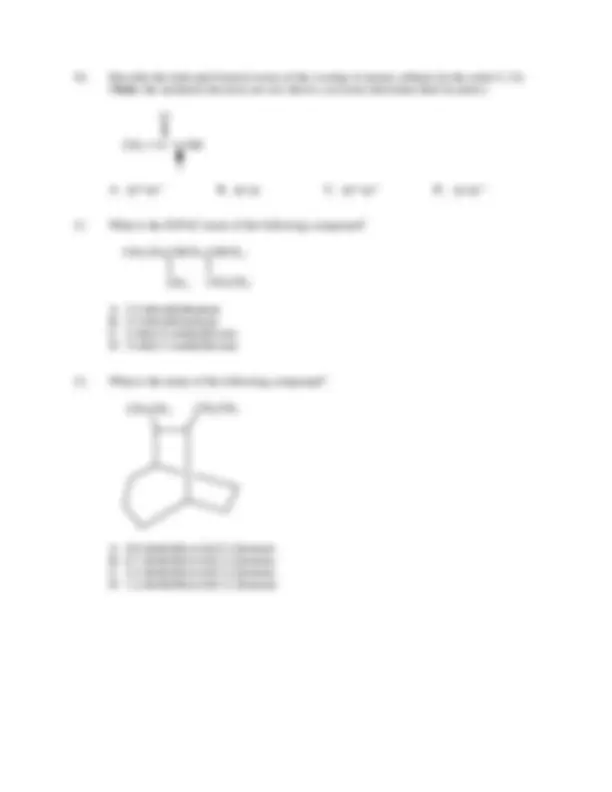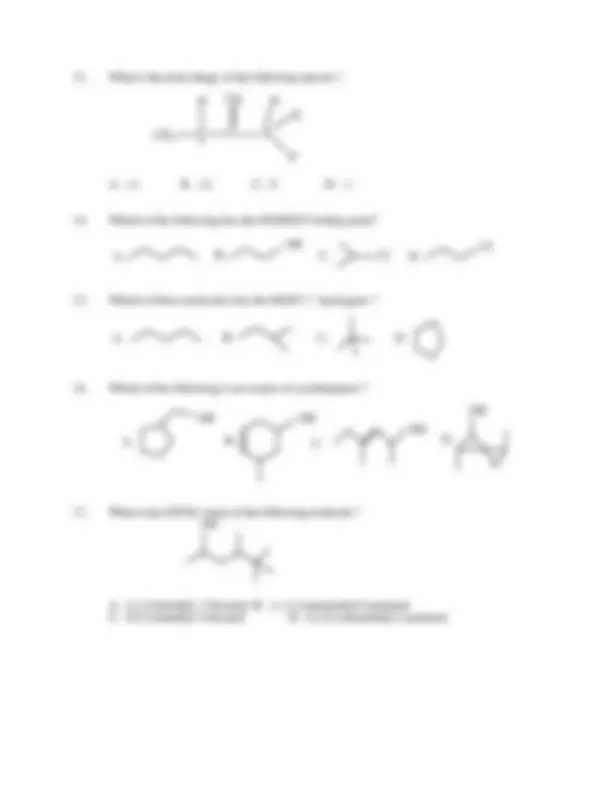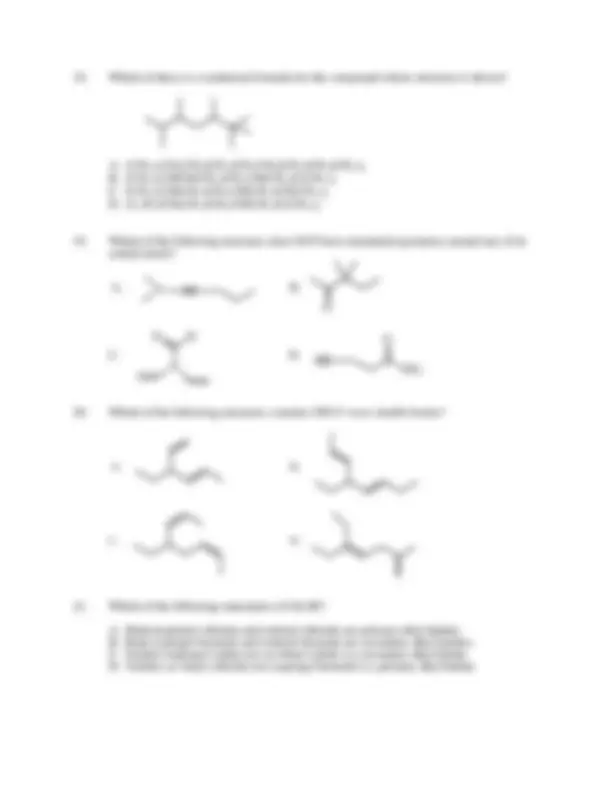





Study with the several resources on Docsity

Earn points by helping other students or get them with a premium plan


Prepare for your exams
Study with the several resources on Docsity

Earn points to download
Earn points by helping other students or get them with a premium plan
Community
Ask the community for help and clear up your study doubts
Discover the best universities in your country according to Docsity users
Free resources
Download our free guides on studying techniques, anxiety management strategies, and thesis advice from Docsity tutors
Material Type: Exam; Professor: Morgan; Class: Organic Chemistry I; Subject: Chemistry; University: Xavier University of Louisiana; Term: Fall 1999;
Typology: Exams
1 / 6

This page cannot be seen from the preview
Don't miss anything!




A. resonance forms B. the same compounds C. different compounds D. isomers
A. NH 3 B. CHCl 3 C. CO 2 D. BF 3
O | |
A. CH 2 =CHCH 2 CH 3 B. CH 2 =CHCH 2 OH C. CH 3 CHO D. CH 3 CH 2 OH
A. 1,3-dimethylbicyclo[5.3.0]nonane B. 1,3-dimethylbicyclo[5.3.1]nonane C. 1,8-dimethylbicyclo[5.3.0]nonane D. 1,9-dimethylbicyclo[5.3.0]nonane
OH (^) OH
OH OH
and
A. different compounds that are isomers B. different compounds that are not isomers C. resonance structures D. the same compound
A. other molecules like itself, but not water. B. water, but not other molecules like itself. C. both water and other molecules like itself. D. neither water nor other molecules like itself.
OH (^) Cl A. B. C. Cl^ D.
A. 2,2,3-trimethyl- 5-hexanol B. 1,1,1,2-tetramethyl-4-pentanol C. 4,5,5-trimethyl-2-hexanol D. 4,5,5,5-tetramethyl-2-pentanol
A. B.
C. D.
A. Both neopentyl chloride and isobutyl chloride are primary alkyl halides. B. Both isopropyl bromide and isobutyl bromide are secondary alkyl halides. C. Neither isopropyl iodide nor tert -butyl iodide is a secondary alkyl halide. D. Neither sec -butyl chloride nor isopropyl bromide is a primary alkyl halide.